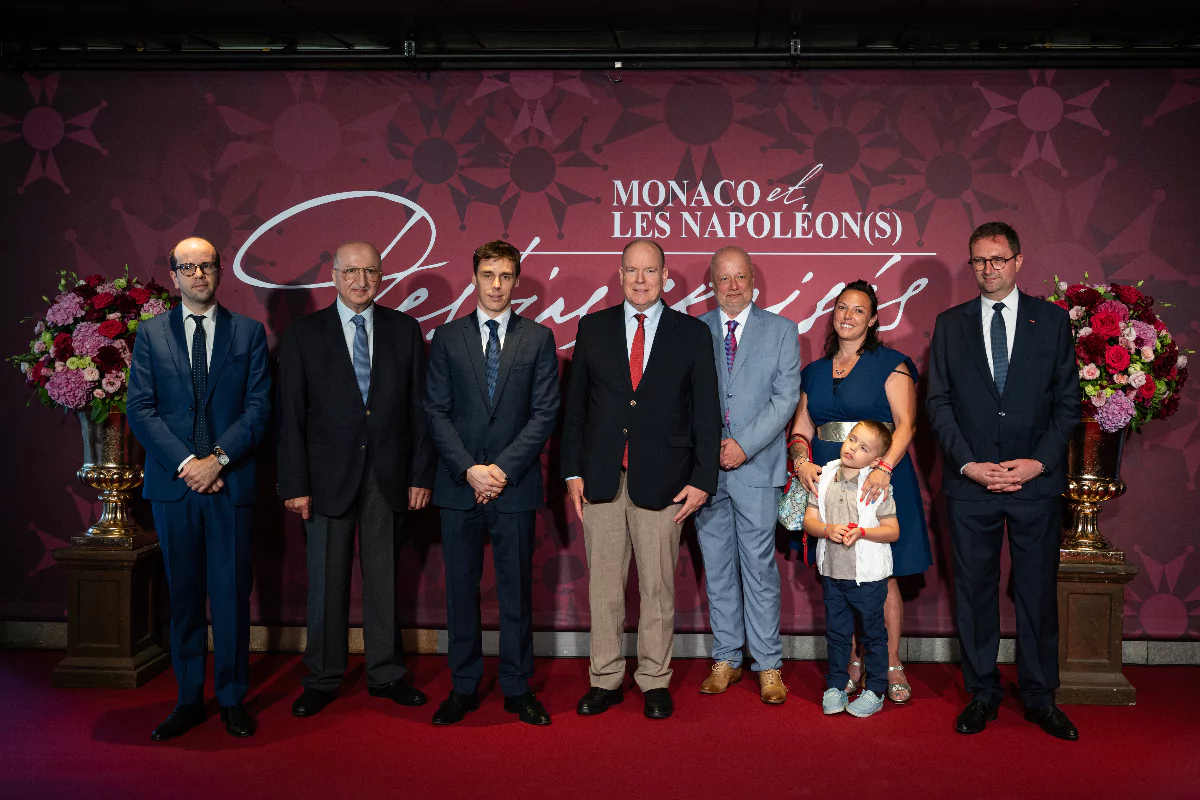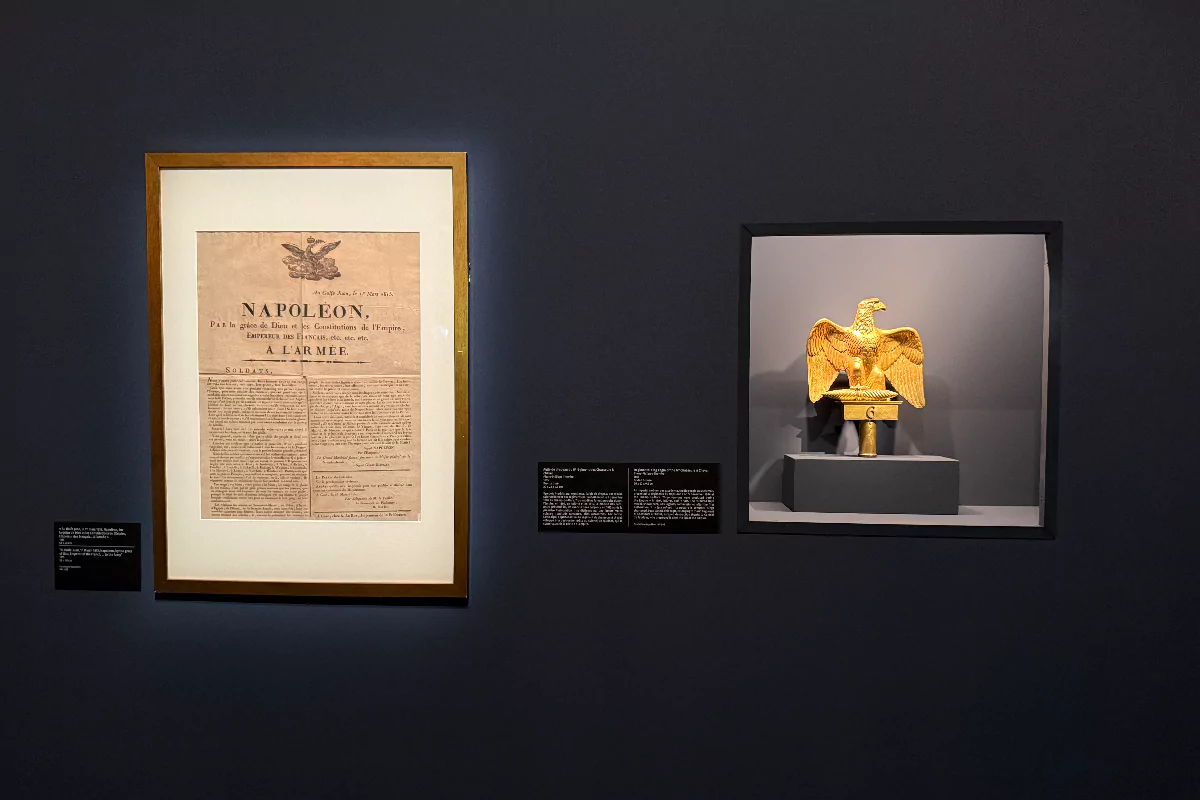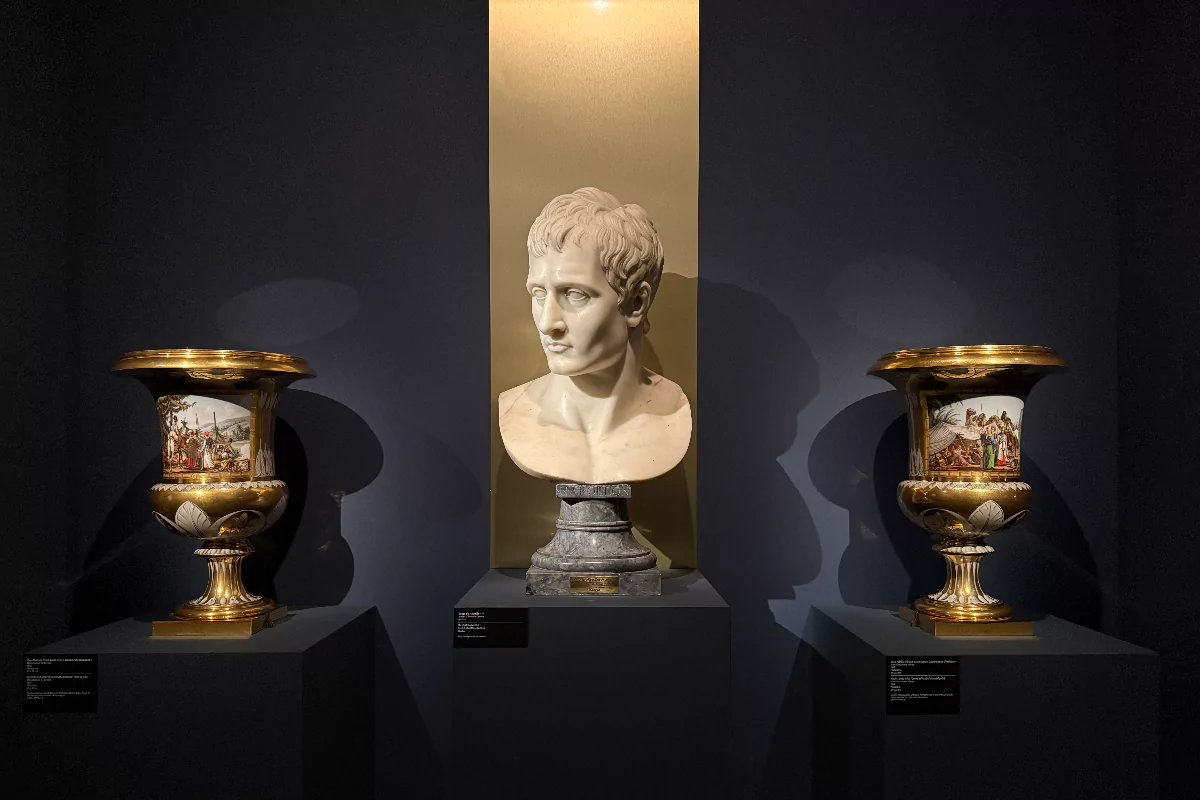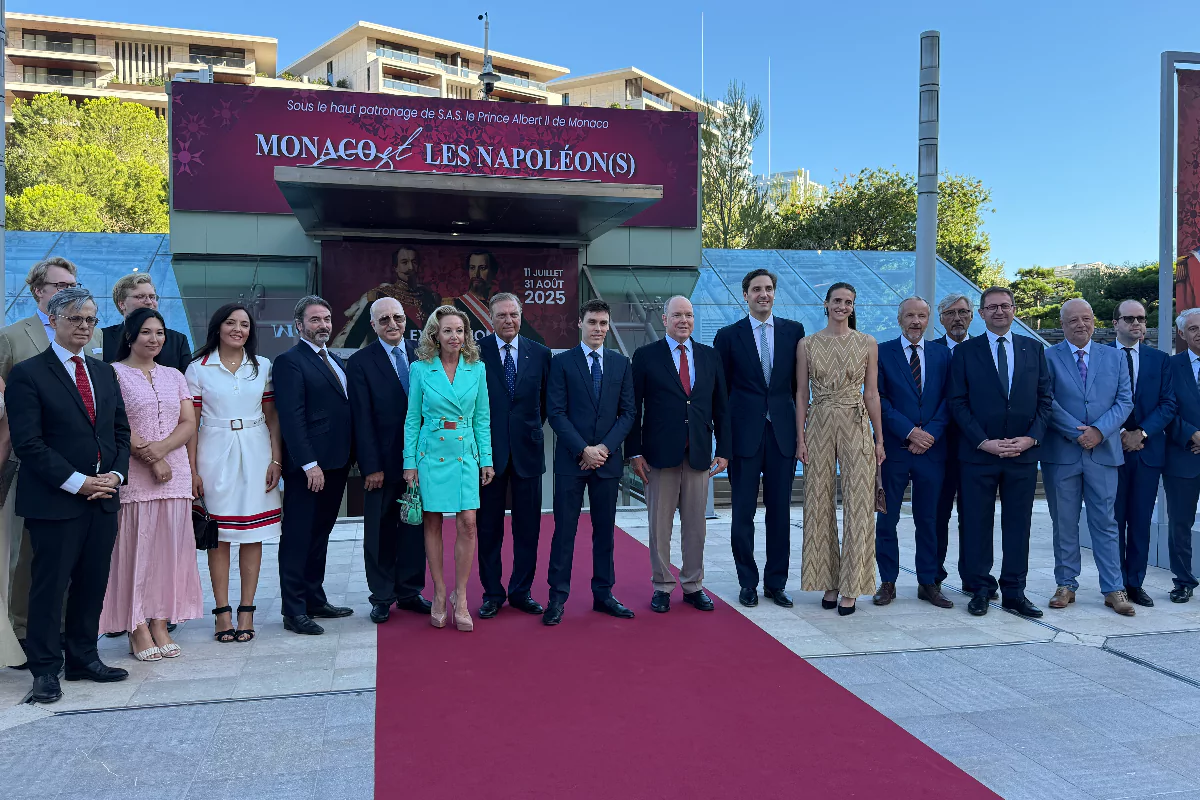Prince Albert II officially inaugurated the ‘Monaco and the Napoleons: Intertwined Destinies’ exhibition at the Grimaldi Forum on 10th July. The exhibition showcases the profound but little-known connections between the Principality and the two Napoleonic Empires.
The opening ceremony was attended by exhibition ambassador Louis Ducruet, his wife Marie Ducruet, and descendants of Napoleon Bonaparte. Prince Albert II toured the displays, which span the entire 19th century and reveal how the fates of Grimaldi and Bonaparte dynasties became intertwined.

Historical connections revealed
The exhibition’s seven sections begin with the encounter in 1815 between Napoleon I and Prince Honoré V near Cannes during the Emperor’s return from Elba. This meeting, later recounted by Alexandre Dumas though disputed by the Prince himself, set the stage for a complex relationship that would shape Monaco’s destiny.
The exhibition reveals how the Grimaldi members became active participants in the Napoleonic era. Prince Honoré V served as an equerry to Empress Joséphine at Malmaison after her divorce from Napoleon, managing her stables and becoming deeply embedded in the imperial court’s daily life. His descendant, Prince Charles III, would later forge crucial ties with Napoleon III and Empress Eugénie during the Second Empire festivities.
The exhibition’s centrepiece is the story of the ‘Great Alliance’ of 1861, when Napoleon III’s treaty with Charles III transformed Monaco from a struggling principality into today’s well-known destination.
In exchange for ceding Menton and Roquebrune to France, Monaco received four million francs, recognition of its sovereignty, and the promise of railway access.

Rare artefacts on display
The personal dimension of these relationships emerges through artefacts from the private collection of David and Mikhail Iakobachvili, including Joséphine’s malachite cameo parure, Marshal Lannes’ campaign writing desk gifted by Napoleon I, and exquisite tabatières bearing imperial portraits. These objects reveal how the Grimaldi members served as both soldiers and courtiers in the Napoleonic world.
Louis Ducruet, reflecting on his role as exhibition ambassador, explained his fascination with these historical connections: “Under Napoleon I, Monaco, annexed by France in 1793, disappeared from the map of Europe. Under Napoleon III, the Principality, which had regained its sovereignty after the fall of the First Empire, underwent an astonishing metamorphosis that ensures its continuity even today.”

The exhibition’s final section demonstrates how Monaco’s cultural renaissance under Albert I was influenced by the Second Empire. The Monte Carlo Opera House, designed by Charles Garnier—architect of Napoleon III’s Paris Opera—became a “little Paris”. It carried on the tradition of supporting the arts, even after the Second Empire had fallen.
Curated by Pierre Branda of the Napoleon Foundation alongside Thomas Fouilleron and Thomas Blanchy from the Prince’s Palace Archives, the exhibition presents nearly 200 works.
Running until 31st of August, it offers visitors the opportunity to explore this hidden chapter of European history
Stay updated with Monaco Life: sign up for our free newsletter, catch our podcast on Spotify, and follow us across Facebook, Instagram, LinkedIn, and Tik Tok.
Main photo by Monaco Life.
